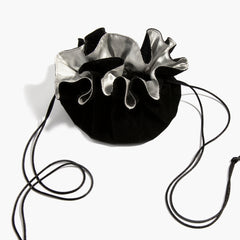If there is any universally recognized force by people everywhere, it is the power of love. And nothing represents the concept of love like the symbolism of the heart. We see the heart symbol everywhere and instantly recognize its meaning. But where does the heart symbol come from, and why do we relate so strongly to it today?
This love symbol and its meaning can actually be traced back over 2,000 years from the discovery of heart-shaped Indus Valley Civilization artifacts. The Middle Ages saw the origins of the symbol of the heart in Aristotle's writings. He described the human heart as having three chambers and a small indentation in the middle. When artists and scientists subsequently tried to capture that shape in ancient medical texts, the general heart shape was the result.
It naturally followed that, with its long association with emotion and pleasure, that the heart symbol became widely associated with the concept of love. Hearts were increasingly depicted in many media, including art, on coats of arms, and textiles. Over time, those early inverted heart images gave way to today’s more recognizable “point-down” heart shape.
The first known image was a miniature illustration used to adorn a capital “S” in a French manuscript from the 1250s that showed a kneeling lover offering his heart to his beloved.
But it was during the Renaissance (14th through 17th century) with its great advances in science and art and celebration of human emotions and achievement, that the heart was fully embraced as a symbol of romance and courtly love. Chaucer wrote a poem, Parliament of Fowls, in 1375 referring to February 14th as the day when “every foul cometh ther to choose his mate.”
Over time, the heart found its expression in beautiful sacred paintings and everyday playing cards. By the 18th and 19th centuries, it was widely used as a sign of love.
But, perhaps it is Valentine’s Day that most brings the heart to mind. Valentine’s Day actually originated as a Christian feast day that celebrated the Christian martyr, Saint Valentine. Celebrated each year on February 14, the day became linked with the idea of romantic love during the Renaissance, possibly inspired by the idea of spring and the mating season.
It wasn’t until 18th century England that Valentine’s Day became what we know it as today – an occasion for couples to exchange gifts and express their love for each other.
Today, hearts are everywhere, carrying meaning ranging from life and self-expression to romantic and non-romantic love. And hearts don’t just symbolize the affection between two people but are emblematic of a state of mind that embraces all humankind. Small wonder that the heart, with its rich symbolism, is a popular gift choice that is both timeless and contemporary. Whether it’s a heart necklace, bracelet, or a heart charm, it’s difficult to go wrong with the heart when selecting a gift for yourself or another.
Connected Symbols
The heart is often associated with other symbols. One example is the lock and key that often symbolizes the unique attraction and connection between two individuals as well as evoking value, desire, and security. The pineapple is also a natural symbol complementing its association with hospitality, a warm home, and a welcoming heart.
From History to the Present
From ancient interpretations to an expression that’s specific to the individual, the history of the heart shape continues to this day. At ALEX AND ANI, we love celebrating the symbolism of the heart, which is why we’ve crafted a one-of-a-kind selection of heart accessories, necklaces, earrings, bracelets, and more. Treat yourself or give the perfect gift to show how much you care, and be sure to explore our customizable designs for the opportunity to uniquely wear your heart on your sleeve.





